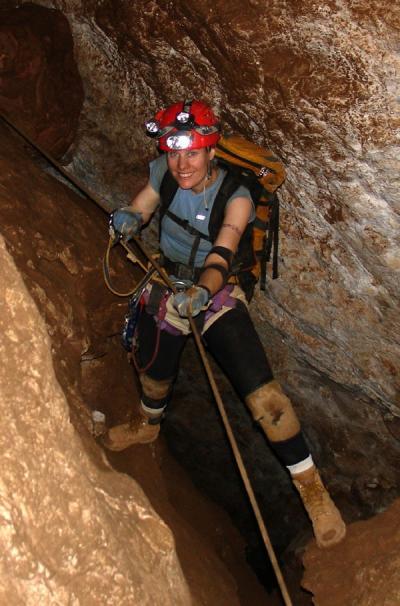North American bats are facing a tough new millennium. 600,000 per year are already killed due to government subsidies of wind energy and so far 7 million have died due to White Nose Syndrome.
While we are likely stuck with wind energy for the foreseeable future, there is hope for White Nose Syndrome. Scientists have discovered that the deadly WNS fungus can survive in caves with or without the presence of bats.
Our flying mammal friends serve as food plant pollinators and they keep the insect population under control. They even have value in medical research, particularly as it pertains to blindness. But it's the insects people think about the most: a single bat can eat thousands of insects in a single night and so they are critical to controlling bugs that threaten agriculture and forestry; estimates are often somewhat made up but if it helps, their pest-control value to the economy is estimated in the billions of dollars.
The new research, led by University of Akron associate professor of biology Hazel Barton, identifies cold-loving, cave-dwelling fungi closely related to WNS, and where and how they spread, and how they survive. These findings could help predict the future of North American bats —among them — the common Little Brown Bat, first seen with
White Nose Syndrome
in Ohio in March 2011.
White Nose Syndrome
appears as a white, powdery substance on the muzzles, ears and wings of infected bats and gives them the appearance they've been dunked in powdered sugar. Since it was first discovered in hibernating bats in New York in winter 2006-07, WNS has spread across 22 states, including Ohio. In Vermont's Aeolus Cave, which once housed 800,000 bats, WSN wiped out the hibernation den's entire population.

A little brown bat with White-Nose syndrome.Credit: Jonathan Mays, wildlife biologist, Maine Department of Inland Fisheries and Wildlife
In "Comparison of the White-Nose Syndrome agent Pseudogymnoascus destructans to cave-dwelling relatives suggests reduced saprotrophic enzyme activity," published in PLOS ONE, Barton and UA post-doctoral fellow Hannah Reynolds compare two closely related fungi species and reveal common threads, including the discovery that the related fungi share the same nutritional needs. Originally satisfied by cave soil, the fungus' nutritional source has now transferred to bats. Barton and her colleagues are zeroing in on when the fungus transferred from environment to bat and the consequences of the fungus' relentless ability to survive solely in caves, uninhabited by bats.
"The jump from the environment to the bat has come at the expense of some ability for Pd to grow in the environment, but not entirely," says Barton, who adds that the fungus still retains enough function to grow exclusively in caves in the absence of bats.
"The ability of the fungus to grow in caves absent of bats would mean that future attempts to reintroduce bats to caves would be doomed to failure," she says.
Ongoing research in Barton's UA lab continues to examine the sustainability of WNS to help determine the future of bats amid the deadly disease.

Dr. Hazel Barton, associate professor of biology at the University of Akron, and her research team reveal new clues about White-Nose syndrome. Credit: Pat Seiser






Comments